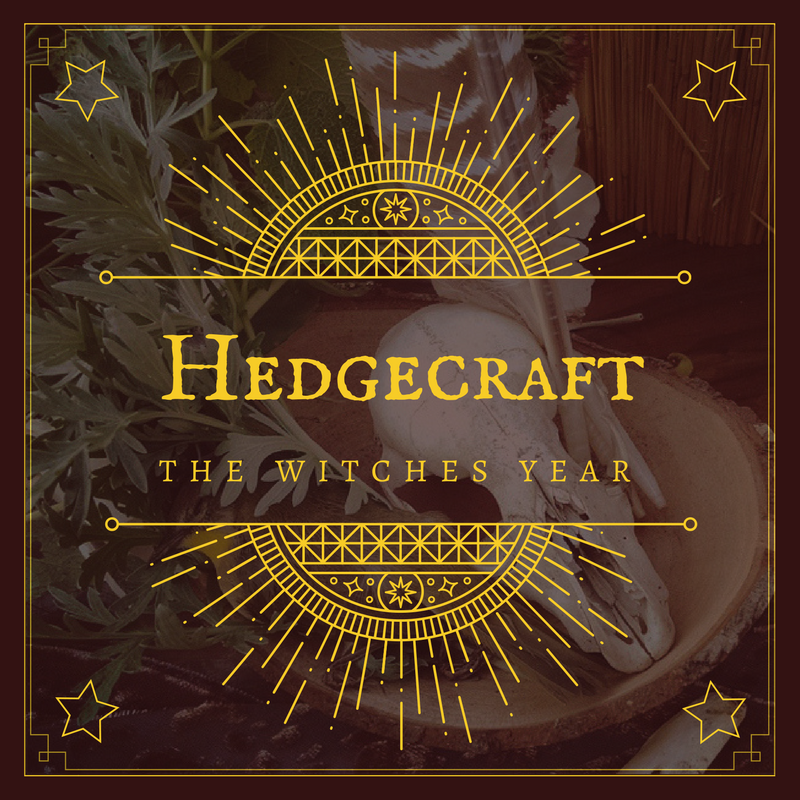|
I love books. There. I said it. I really do. I read a lot, but still not as much as I'd wish. I grabbed my old list and I'd like to improve upon it. Here is my most current reading list and resource list. It's getting cold, and there is nothing like good book, a warm drink and a hot fire. The Foundational Texts:
Aradia or the Gospel of the Witches of Italy - Charles G. Leland The Secret Commonwealth: An Essay on the Nature and Actions of the Subterranean (and for the Most Part) Invisible People, Heretofore Going Under the Name of Elves, Fauns, and Fairies - Robert Kirk The Fairy-Faith in Celtic Countries - W.Y. Evans-Wentz The Golden Bough - James George Frazer The Greater Key of Solomon - Samuel L. Macgregor Mathers The Complete Art of Witchcraft: Penetrating the Secrets of White Magic - Sybil Leek Fifty Years in the Feri Tradition- Cora Anderson High Magic’s Aid - Gerald Gardner Mastering Witchcraft: A Practical Guide for Witches, Warlocks & Covens - Paul Huson Natural Magic - Doreen Valiente Rebirth of Witchcraft - Doreen Valiente Witchcraft for Tomorrow - Doreen Valiente Witchcraft: a Tradition Renewed - Doreen Valiente and Evan John Jones The Writings of Roy Bowers - (Robert Cochrane) Apocalyptic Witchcraft - Peter Grey Traditional Witchcraft: The Roebuck in the Thicket - Evan John Jones & Robert Cochrane, editor Mike Howard The Robert Cochrane Letters: An Insight into Modern Traditional Witchcraft - Robert Cochrane and Evan John Jones The Forge of Tubal Cain - Ann Finnin The Pillars of Tubal Cain - Nigel Aldcroft Jackson & Michael HowardLiber Nox: A Traditional Witch's Gramarye - Michael Howard Call of the Horned Piper - Nigel Aldcroft Jackson Masks of Misrule - Nigel Jackson Grimore for Modern Cunning Folk - Peter Paddon Letters from the Devil's Forest - Robin Artisson The Witching Way of Hollow Hill - Robin Artisson The Horn of Evenwood - Robin Artisson Azoetia: Grimoire of the Sabbatic Craft - Andrew D. Chumbley Opuscula Magica. Volume I: Essays on Witchcraft and the Sabbatic Tradition - Andrew D. Chumbley and Daniel A. Schulke The Devil's Dozen-Thirteen Craft Rites of The Old One - Gemma Gary Cecil Williamson's Book of Witchcraft-A Grimoire of the Museum of Witchcraft - Steve Patterson Serpent Songs - Editor: Nicholaj de Mattos Frisvold Specific Cultural Traditions: Balkan Traditional Witchcraft - Radomir Ristic Practical Magic in the Northern Tradition - Nigel Pennick Irish Witchcraft and Demonology - St. John D. Seymour The Devil's Plantation: East Anglian Lore, Witchcraft & Folk-Magic- Nigel Pearson Traditional Witchcraft a Cornish Book of Ways - Gemma Gary The Black Toad - Gemma Gary General Craft: Wheel of the Year - Pauline Campanelli Witches All - Elizabeth Pepper Irish Witchcraft from an Irish Witch - Lora O'Brien Magical Ritual Methods - William G. Gray Seasonal Occult Rituals - William G. Gray Ecstasies: Deciphering the Witches' Sabbath - Carlo Ginzburg and Raymond Rosenthal History: The White Goddess: A Historical Grammar of Poetic Myth - Robert Graves The History of the Devil: The Horned God of the West - R. Lowe Thompson Witchcraft and Society in England and America, 1550-1750 - Marion Gibson Cunning-Folk & Familiar Spirits: Shamanistic Visionary Traditions in Early Modern British Witchcraft and Magic - Emma Wilby Witchcraft in Tudor and Stuart England - Alan MacFarlane Singing With Blackbirds: The Survival of Primal Celtic Shamanism in Later Folk -Traditions by Stuart A. Harris Logan The Pattern Under the Plough - George Ewart Evans. Faber and Faber. The Secret Teachings of All Ages - Manly P. Hall. Shamanism: Archaic Techniques of Ecstasy - Mircea Eliade Witchcraft in Europe, 400-1700: A Documentary History - Alan Charles Kors and Edward Peters Shamans Sorcerers and Saints: A Prehistory of Religion - Brian Hayden Myths and Symbols in Pagan Europe - H.R. Ellis Davidson The Pagan Religions of the Ancient British Isles: Their Nature and Legacy - Ronald Hutton Popular Magic: Cunning-folk in English History - Owen Davies The Know How: Complete Book of Incense, Oils & Brews - Scott Cunningham Hoodoo, Herb and Root Magic - cat yronwode Practical Candleburning Rituals: Spells and Rituals for Every Purpose - Raymond Buckland Magic and Husbandry- The Folk-Lore Of Agriculture; Rites, Ceremonies, Customs, And Beliefs Connected With Pastoral Life And The Cultivation Of The Soil; With Breeding And The Care Of Cattle; With Fruit-Growing, Bees, And Fowls – Lewis Dayton Burdick Wortcunning: For Info on plants see my other site, it's literally a giant bibliography. Witchcraft Medicine: Healing Arts, Shamanic Practices, and Forbidden Plants - Claudia Müller-Ebeling, Christian Rätsch, and Wolf-Dieter Storl Pharmako Trilogy - Dale Pendell Cunningham’s Encyclopedia of Magical Herbs by Scott Cunningham Herbal Rituals. Judith Berger The Herb Book by John Lust Herbal Medicine-Maker’s Handbook: A Home Manual by James Green Magical and Ritual Use of Herbs - Richard Alan Miller Blackberry Cove Herbal: Healing With Common Herbs in the Appalachian Wise-Woman Tradition -Linda Ours Rago Leechcraft: Early English Charms, Plant-lore and Healing - Stephen Pollington Witches, Midwives, and Nurses: A History of Women Healers - Barbara Ehrenreich and Deirdre English Viridarium Umbris: The Pleasure Garden of Shadows, by Daniel Alvin Schulke. Xoanon Publishing. Thirteen Occult Pathways to Herbalism, Daniel Alvin Schulke American Household Botany. 1600-1900. Judith Sumner. Folklore: A Dictionary of English Folklore - Jacqueline Simpson and Steve Roud Make Merry In Step and Song: A Seasonal Treasury of Music, Mummer's Plays & Celebrations in the English Folk Tradition - Bronwen Forbes The Folklore of Plants T.S. Thistleton Dyer Appalachian Folk Magic: Folk Medicine in Southern Appalachia. Cavender, Anthony P. This List from Backwaters Witch Long Lost Friend — John George Hoffman Frank C. Brown North Carolina Folklore collection, especially book 7 Signs, Cures and Witchery, Gerald Milnes The Silver Bullet and other American Witch Stories, Hubert J. Davis American Witch Stories, Hubert J. Davis Green Hills of Magic: West Virginia Folk Tales from Europe, Ruth Anne Musick Staubs and Ditchwater: a Friendly and Useful Introduction to Hillfolks' Hoodoo, Byron Ballard Asfidity and Mad-Stones: A Further Ramble Through Hillfolks' Hoodoo, Byron Ballard Other Witch's Reading Lists: Archaic Honey's Resource List The Witches Resistance Action List Poison Path Resource Guide
4 Comments
It’s finally cold here, and I can almost taste the Winter Solstice tickling the back of my nostrils. I love seasonal flavors, chaga tea with my spicebush honey and cream, cornbreads crispy with lard on the bottom, roasted bear shoulder studded with butter and garlic, and sour kraut bubbling with life. These are some flavors you can find in the place I call home. Chestnuts roasted to caramel sweetness. Collard greens still crisp and brilliant despite the frosts steamed in apple cider vinegar with sumac spice. Local chicken roasted with cranberries from higher elevations and trifolate orange marmalade. Pear sauce from our mother pear tree poured over oat cakes with fresh whipped cream. Now I’m hungry. Are you? The French coined the term terroir when they discussed the unique “character” ascribed to the tastes and magic of foods from specific biogeographical places. It could be the unique combination of that locality's air, water, and soil. Something undefinable that makes it special. Here in Appalachia, we have many edible plant species, wild game, and foragable mushrooms. We are blessed with abundance in this way. A unique temperate rain forest-like precipitation combined with the moderate growing season makes it possible to grow many fruits, nuts and vegetables that if were we farther north or south, would be quite difficult. As a professional forager I do believe heartily in the nuances of the terroir of a place, the unique flavors and nutrients of the wild and cultivated foods we foster in these mountains, or wherever you call home. The wonder of foraging is that we can all be foodies. We can skip the farmer’s market, keep our hard earned dollars in our pockets and graze on the abundance of food from our yards to the deep woods. The most challenging thing is finding ways to remember that lost knowledge. I was not raised a witch, a farmer, or a forager. I learned it all in my young adulthood by doing an apprenticeship with Natalie Bogwalker at Wild Abundance, and from many, many others. I learned from books. I learned from Youtube videos and I learned from friends. I was privileged to stumble upon the community I have in Western North Carolina, and I have to say, I finally found my home. I was eating some kraut my friends and I made today, and I was thinking about the strange and unique flavors. If there is a terroir of food and plants and animals, I imagine there is too of magic. I want to advocate for a terroir of folk magic. A magic of place. A unique and special magic that only flows through the French Broad River and the and the Pisgah national forest. A Western Carolinian Appalachian magic terroir. I think bioregional animism and witchcraft, or the magic of a specific place, really comes to life for me when I am foraging. I see the unique array of plants, fungi and animals that these mountains have fostered and marvel at the ancient rivers and springs that feed these dark and secret hollers. I love that my body is built from the unique soil I walk upon and the water I drink and swim in. I love that there is nowhere else on Earth quite like this. Rediscovering local flavors is definitely still a hot topic as restaurants and groceries showcase locally grown and now even foraged fare. Rewilders and muggles alike can get behind eating from our bioregion since it just makes sense, and someday, it may be the only thing on the menu. Just as much as I want to support people in growing, foraging and sharing foodways together, I want to support and defend bioregional magical practices. In defense of folk magic, I say there is no better way to honor the places that we live, and the beings that dwell in there, then to remember and discover the ways that went before. Not just the baskets that were woven or the way that songs were sung, but the way the spirits want to be seen, the way to implore the yarrow to heal our wounds, the way to leave offerings that will please our genius loci. I love that term. The spirit of place. It is the terroir of the spirit world. I learned it from Marcus McCoy about 8 years ago, before we ever knew each other from an article he wrote. And I see the term more and more since he popularized it, which warms my bioregional heart. The unique flavor of beings and creatures that crawl and fly and swim in our home places. No matter where we live we can directly interact with these beings. It is also important for many of us to remember, as we seek to form relationship with the land, that we are living on stolen land, and to become entrenched in the ways of the land is not an invitation to appropriate cultural or religious practices of the indigenous peoples who came before us, and who still dwell with us. This call is an invitation to seek out and meet the spirits, not claim them or command them. It is an invitation to listen and look. To hear and to smell. To taste the land. To feed it. Bioregional witchcraft to me, means living a practice that is informed by the beings you live amongst, both human and non. It is a practice that lives and grows. I tell my students whether we are studying Medieval herbalism or Appalachian folk charms against ghosts, that some things are not meant for us. I was born in Appalachia, but raised all over this country, and that means that those things to which I am privy are different than those things that are privy to someone who was born and raised here in these mountains that I call home. I do not mourn that, for what good would that do me. It is a reality to live in the sometimes-discomfort of realizing we all have access to different things and have different work to do. Living in shame or envy is not the answer. Just as we face the privileges afforded to us by our whiteness, class and/or ability, we must closely and lovingly examine the traditions we engage in for spiritual gain as well.
We all have a pagan past, it’s actually amazing. I see a tendency, within myself included, to idealize Old things and shun creating New things in our witchcraft practices, when in fact what we are practicing is the piecing together of broken ancient ways. We can create, reimagine and rebirth vibrant bioregional witchcraft practices from the broken pieces that the Others tried to stamp out. We can do this by forming relationships with the land around us, and by weaving it together with the practices our ancestors left us. We can live something ancient by making it new and vital. We do not have to have perfect unbroken witch-lineages, we do not have to speak spells that were written in the year 100 A.D. We can find a new way for many of us who do have have access to unbroken traditions to live on this land and observe the seasonal changes in ways that feel authentic. We can do it without spiritual picking-and-choosing in appropriative ways that cause harm to indigenous folks and POC. We can find a new way to forage, to farm and to listen. It is both Old and New. And this, I think, is a fine thing. |
Archives
April 2024
To support me in my research and work, please consider donating. Every dollar helps!
|
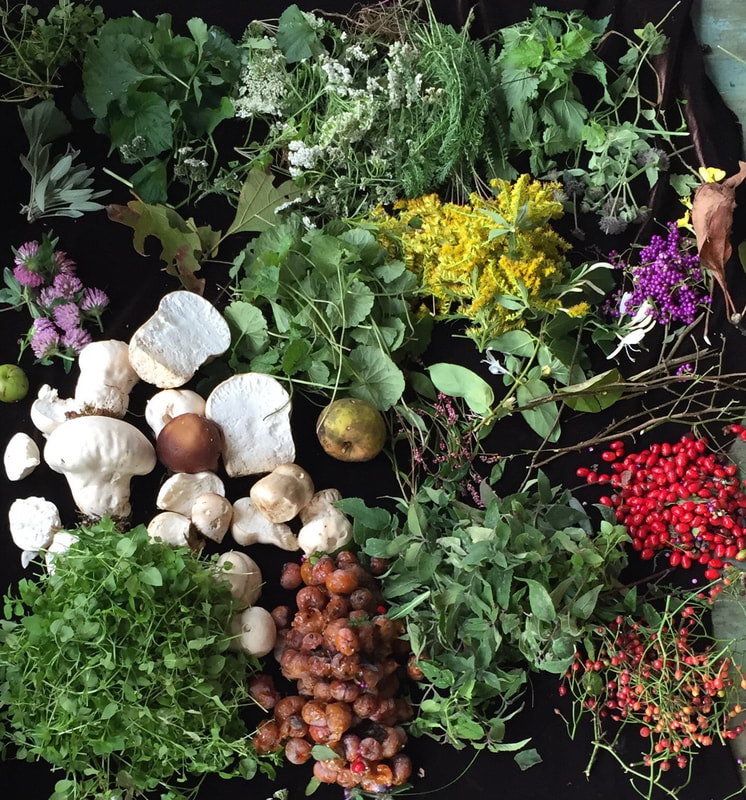
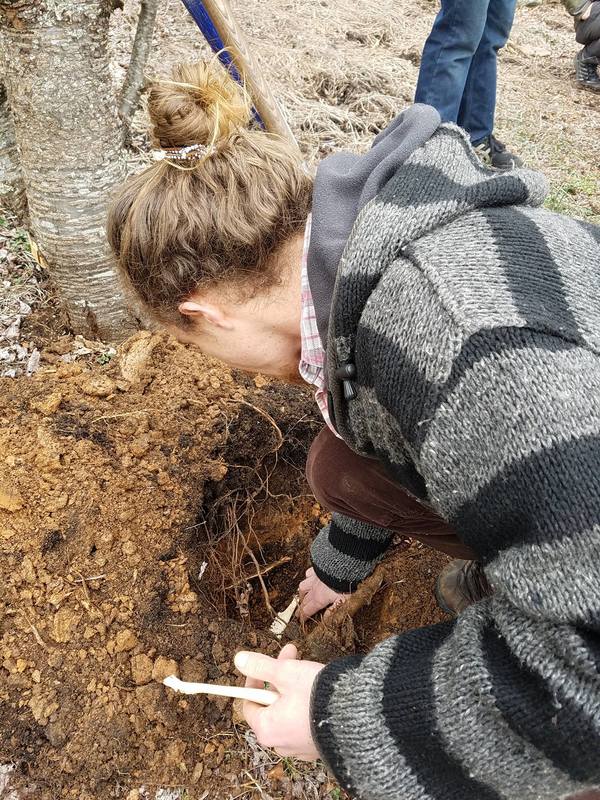
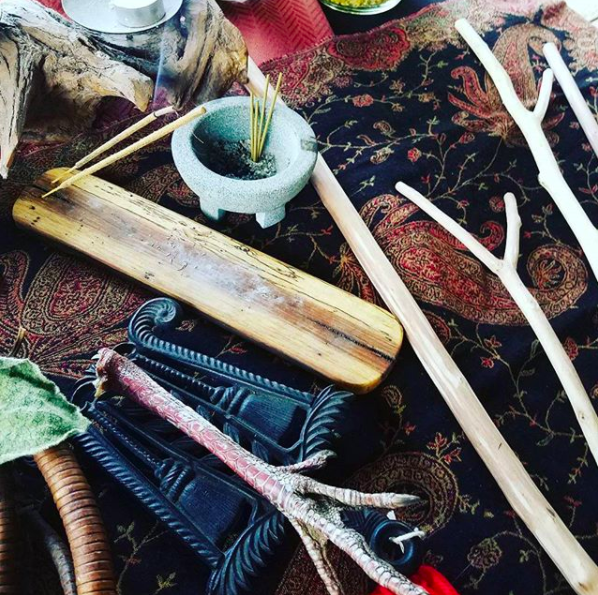
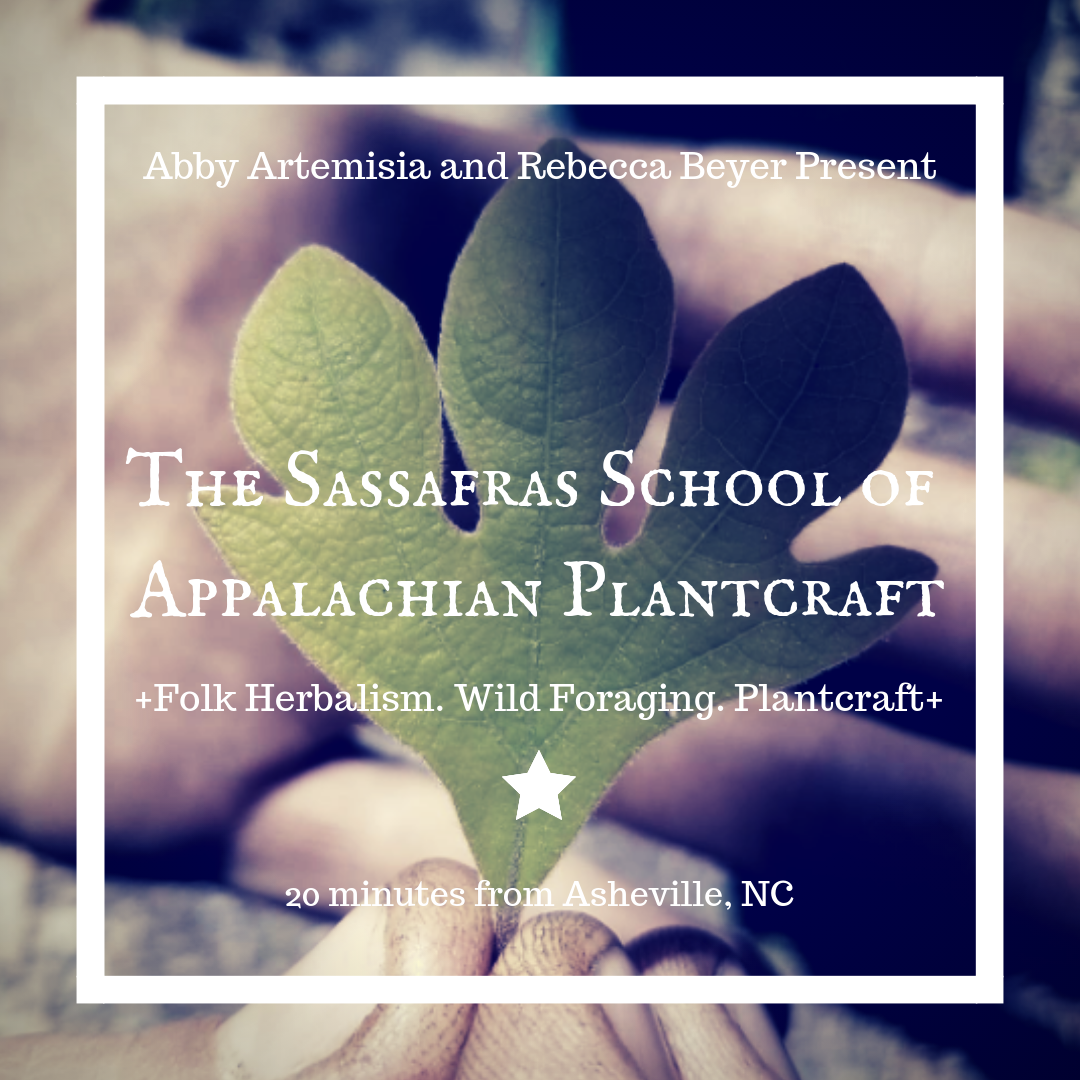
 RSS Feed
RSS Feed
